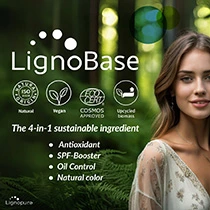Plastic surgeon slams jawline balaclava trend over lack of scientific evidence

Interest in jowl-sculpting balaclavas is growing across online consumer markets due to social media influences and cultural trends. These wearable compression-style masks claim to reduce jowls and define the jawline. However, according to experts, there is no scientific evidence supporting their long-term efficacy.
Dr. Graeme Glass, plastic surgeon at Harley Street, says that any visible improvement from compression-style masks is likely temporary and results from fluid displacement or soft tissue compression.
“Jowls arise at the interface between fixed tissue and mobile tissue. In this case, the retaining ligaments between the jaw and the overlying skin, which are fixed, and the tissue of the midface above, which is mobile,” explains Glass.
“There’s no scientific basis for no-tech wearables like compression masks or balaclavas to permanently ‘melt’ jowls or sculpt the jawline. Any improvement is temporary, you’re just shifting fluid or compressing tissue. Once you take it off, the jowls return.”
Jowls are the name given to the sagging skin and fat that can develop along the jawline due to the natural aging process. UK-based wellness brand Lyma says recent studies support that facial remodeling, especially along the jawline, is an ongoing process extending into later life. These changes, paired with natural declines in collagen and elasticity, can contribute to developing jowls.
Meanwhile, genetics and lifestyle factors can also contribute, including “tech-neck” from excessive laptop or phone usage, sun exposure by not wearing sufficient SPF, smoking, or sudden weight loss in the face, which can cause jowls to be more pronounced.
Next-gen jowl treatments
Traditionally, facelifts have represented the most invasive, long-term solution for treating jowls. However, as lower-face contouring becomes a key consumer priority, the market is leveraging various technologies and minimally invasive treatments to address jowl formation effectively.
Lower Face Rejuvenation is one mainstream method. It uses injectable fillers to treat jowls by pulling the skin upwards for a subtle lifting effect. Lyma says this can be pricey, painful, require repeated treatment, and often cause significant risks and side effects such as temporary swelling and bruising.
 Plastic surgeon questions jawline balaclava claims. Lyma has a laser that markets itself as the “next-gen laser treatment for jowls” and says it’s the “first” clinic-grade, cold laser therapy for treating at a cellular level. It penetrates up to 10cm into the dermis, delivering a proven dose of near-infrared laser light (4 joules/ 60 seconds).
Plastic surgeon questions jawline balaclava claims. Lyma has a laser that markets itself as the “next-gen laser treatment for jowls” and says it’s the “first” clinic-grade, cold laser therapy for treating at a cellular level. It penetrates up to 10cm into the dermis, delivering a proven dose of near-infrared laser light (4 joules/ 60 seconds).
Clinical results show that after four weeks of using the Lyma Laser Pro for 15 minutes daily, skin elasticity is notably improved, jowls are reduced, and the jawline is visibly sculpted.
“Unlike gimmicky sculpting wearables that offer a fleeting fix, the laser works at a cellular level to deliver lasting change,” says Lucy Goff, Lyma’s founder.
The device offers minimal downtime and discomfort, making it suitable for consumers seeking an accessible, non-invasive solution.
Aesthetics in demand
The industry has witnessed a rise in consumers seeking advanced, non-invasive aesthetic treatments, fueled by viral social media trends and celebrity-driven culture.
Increased transparency around cosmetic procedures plays a key role in reshaping the sector, driving mainstream acceptance, reducing stigma, and building consumer trust — ultimately expanding the market for non-invasive aesthetic solutions.
A report by the American Society of Plastic Surgeons reveals that minimally invasive procedures grew 7% in 2023, compared to 5% for plastic surgeries. They claim the rise of minimally invasive treatments is driven by clients’ turning toward low-cost, minimal-recovery procedures like Botox, dermal fillers, and thread lifts as low-risk alternatives to traditional surgery.  Lyma's laser is said to provide lasting jawline results.
Lyma's laser is said to provide lasting jawline results.
Personal Care Insights recently reported on the growing demand for consumers seeking face-lift-style results from non-invasive procedures — a trend referred to as the “liquid face lift.”
Meanwhile, as the aesthetic market continues to evolve, the UK government has proposed new measures to help protect the public from dangerous cosmetic procedures and raise standards across the industry. In doing so, they aim to reduce the cost to the National Health Service of fixing “botched” procedures.
Additionally, they plan to restrict high-risk cosmetic procedures for people under 18, unless authorized by a health care professional.












